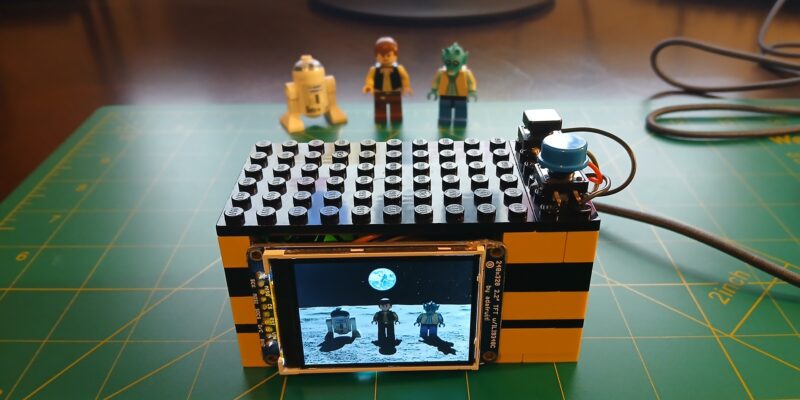Inky pHAT review
By Russell Barnes. Posted

Advertisement
Christmas is coming – keep Santa on the right track with our Raspberry Pi gift guide!
With the ability to display text and images that remain on screen without using a power supply, e-Ink displays are ideal for saving precious battery life in portable projects. They’re also much easier to view in bright sunlight than conventional screens.
The full article can be found in The MagPi 61 and was written by Phil King.
Until now, Pi e-Ink displays have been black and white – but the tri-colour Inky pHAT injects a bright shade of red into the mix. This certainly adds a dash of extra interest to images, such as the logo shown on the display when you unpack your pHAT.
Unlike the rival PaPiRus Zero, the Inky pHAT comes fully assembled, with the e-Ink screen already mounted and connected to the board via a small ribbon cable. This saves fiddling about with a thin and fragile screen, although you still have to take care not to press on it when mounting the pHAT on the Pi’s GPIO pins.
While the Inky pHAT has a Zero form factor, it’ll happily work with any 40-pin Pi model. Communicating via SPI, it only uses six GPIO pins (plus 3 V and 5 V power). If you wanted to locate the screen away from the Pi, however, you’d need to use something like a Black Hat Hack3r.
A single Terminal command installs all the software required. The Python library comes with a few helpful examples, including a calendar and a weather display. There’s a lot of flashing and pulsing as the screen refreshes, the red parts usually appearing last. While the end result looks vibrant, the downside is a much slower refresh time compared with a monochrome e-Ink screen – typically around 15 seconds vs 1 second or less. The badge example takes even longer, but demonstrates the ability for a partial update, adding text (your name) to a background image.
The slow refresh rate makes the Inky pHAT unsuitable for scrolling text, but static text can easily be displayed in any installed TrueType font, using a simple message function in Python. Images are a bit trickier, as you need to prepare them in a special indexed colour mode, and they must also exactly match the size of the display at 212 × 104 pixels.
Last word
4/5
While the slow refresh rate makes the Inky pHAT unsuitable for some projects, it does look far cooler than a standard monochrome eInk display. If you want a low-power, battery-saving screen with a little more pizzazz, this is the one to get.

Russell runs Raspberry Pi Press, which includes The MagPi, Hello World, HackSpace magazine, and book projects. He’s a massive sci-fi bore.
Subscribe to Raspberry Pi Official Magazine
Save up to 37% off the cover price and get a FREE Raspberry Pi Pico 2 W with a subscription to Raspberry Pi Official Magazine.
More articles
Project Gigapixel
With a medium format 6×7 lens, this camera could theoretically be capable of producing a 3.3 gigapixel image
Read more →

Banamera AI camera
Lego bricks are perfect for prototyping
Read more →

Meet Phil Hutchinson: element14 community organiser
Phil has always been “the technical guy”
Read more →
Sign up to the newsletter
Get every issue delivered directly to your inbox and keep up to date with the latest news, offers, events, and more.
